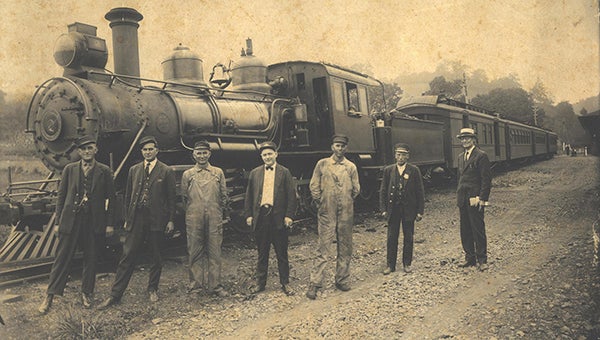Opening Friday: Saluda Train Tales presents “How the West Was Won: Trains and the Transformation of Western NC”
Published 10:00 pm Monday, July 11, 2016

The Boone Stations on the East Tennessee and Western North Carolina Railroad (ET&WNC) also called the “Tweetsie Railroad,” in 1923. (Courtesy Jerry Ledford.)
Ray Rapp, curator of this exhibit, will present the romance and realism of mountain railroading in an exhibition on display at the Saluda Historic Depot on loan from the Mars Hill University’s Rural Heritage Museum. Saluda Train Tales is July 15, 2016 starting at 7 p.m.
“How the West Was Won: Trains and the Transformation of Western North Carolina” tells the story of the coming of the railroads after the Civil War and the impact they had on the life, economy, culture, folklore, music and landscape of the mountains.
Using videos, narratives, historic photos and artifacts, Ray will guide visitors through the history of rail in the region and visitors will learn about the high drama surrounding the construction of the Old Fort and Clinchfield Loops, the dangers of building the steepest mainline railroad grade in America on Saluda Mountain, and the despair that came with the loss of so many lives on these mountain railroads.
The exhibition shows how the arrival of the rails from Spartanburg, Salisbury and East Tennessee reshaped the mountains by bringing in outside investors who launched large scale mining and logging operations that scarred the landscape and left hillsides denuded. At the same time, the railroads exported the raw materials of the mountains; it brought in middle and upper class tourists by making the mountains accessible to travelers.
The exhibit highlights the arrival of such distinguished guests as George Washington Vanderbilt and his mother who first visited Asheville in 1887, and panels show how tourism burgeoned along the railroad right of way in towns such as Hot Springs, Hendersonville, Black Mountain, Saluda, and Waynesville.
The demise of passenger trains is chronicled in the exhibition, but recent efforts to restore the service by the Western North Carolina Rail Corridor Committee are on display. The return of the “varnish” – one of the railroad terms presented in the “Slanguage” section of the exhibition – will be part of a panel and information on current rail excursions.
The exhibition will be at the Saluda Historic Depot through August 31, 2016 and then moved to the NC Transportation Museum in Spencer, N.C. Hours are Thursday – Sunday, noon to 4 p.m.
Saluda Train Tales is a free monthly event to educate the community of the importance of Saluda’s railroad history and the Saluda Grade.
These events are at the Saluda Historic Depot, 32 W Main Street, Saluda, NC 28773.
For more information, please contact Judy Ward at 828-674-5958 or judyward@charter.net or Cathy Jackson at 828-817-2876 or cathy@saludalifestyles.com.
– article submitted
by Cathy Jackson





